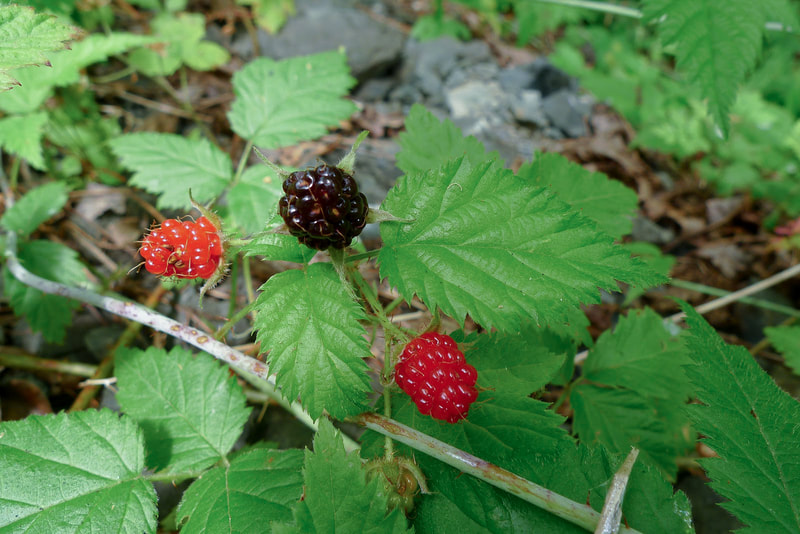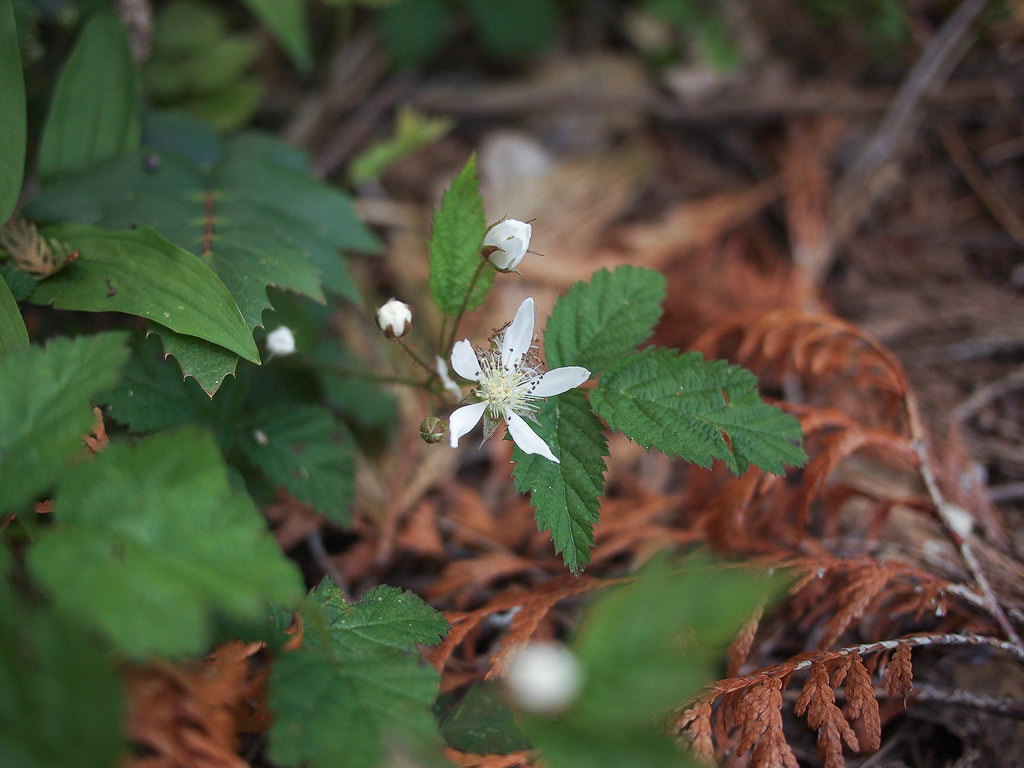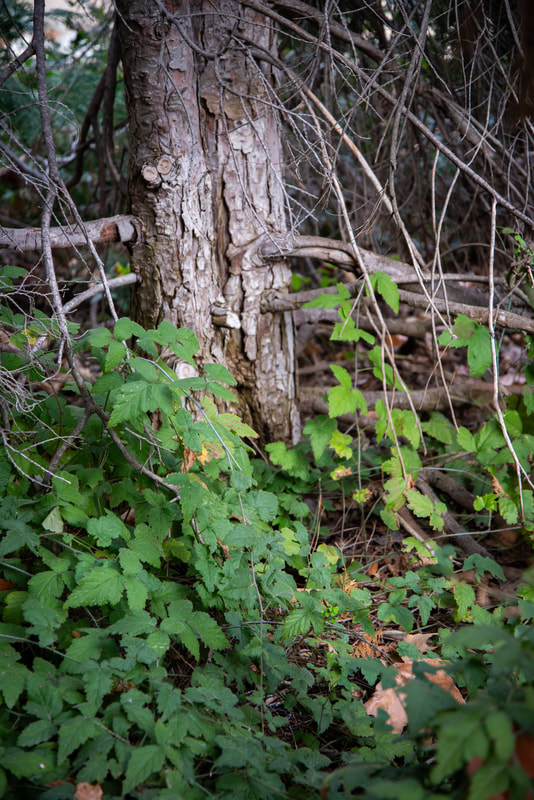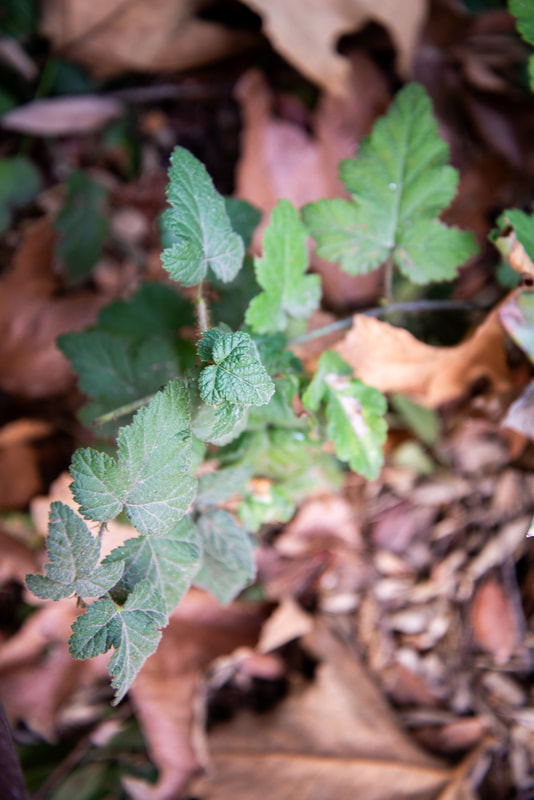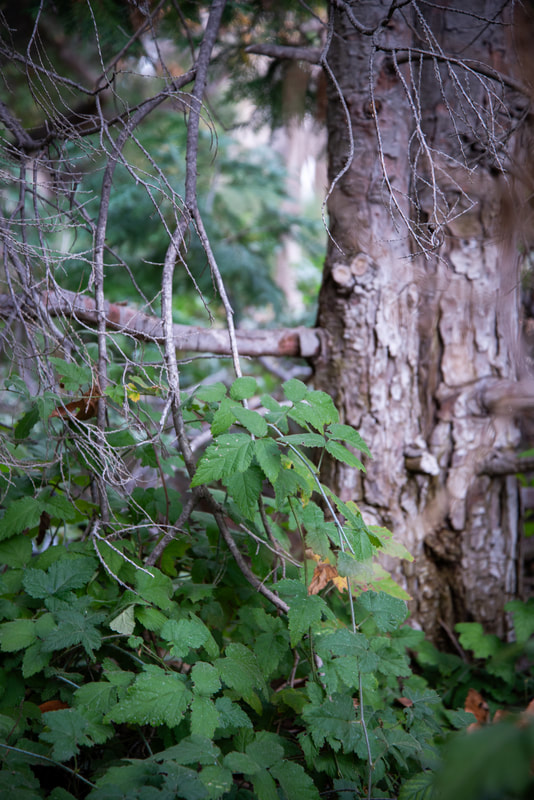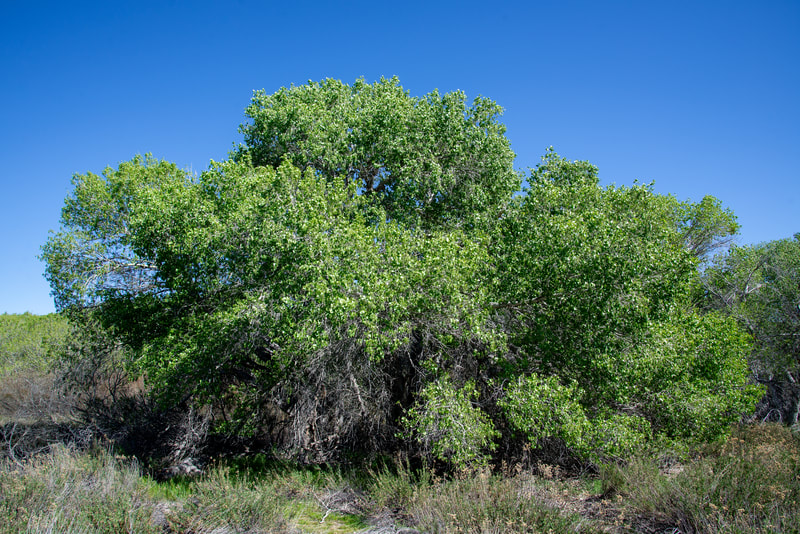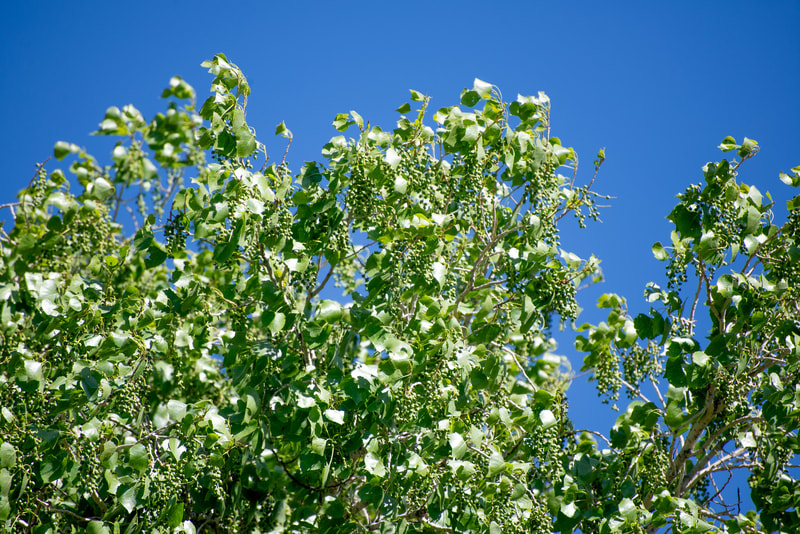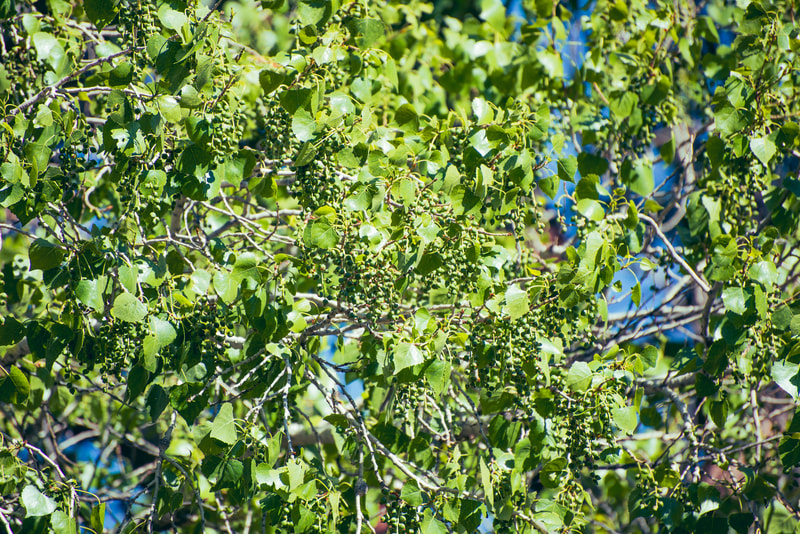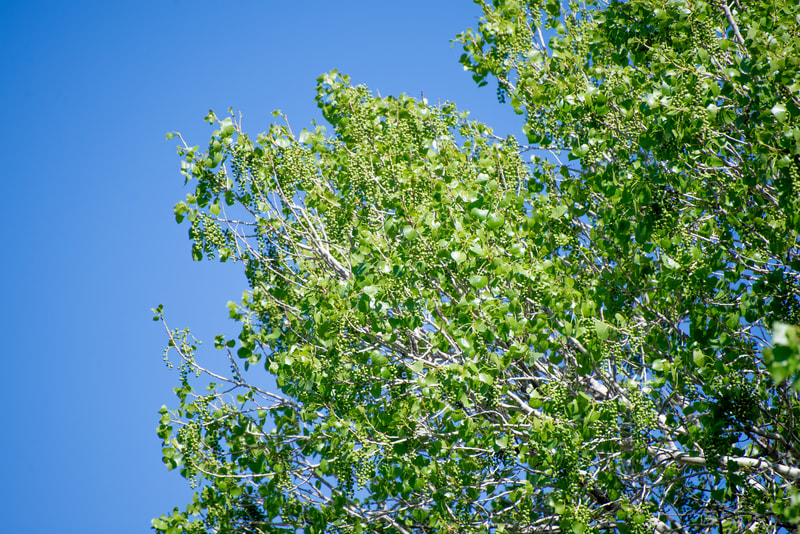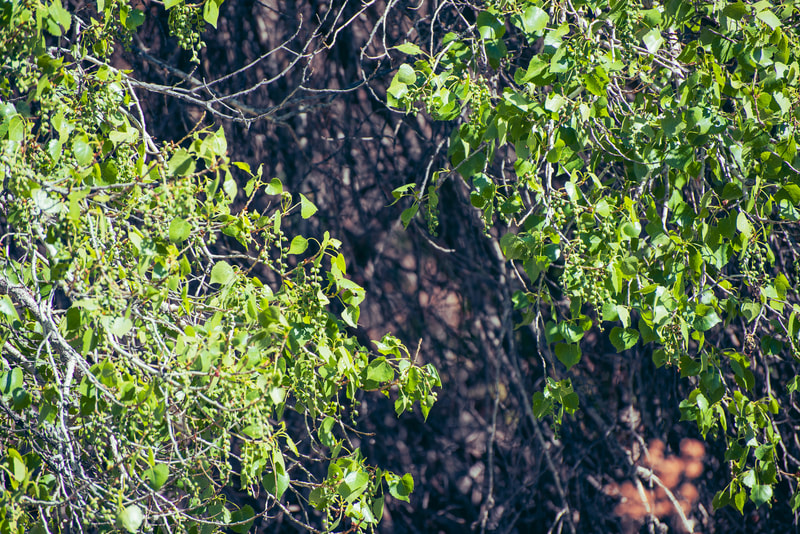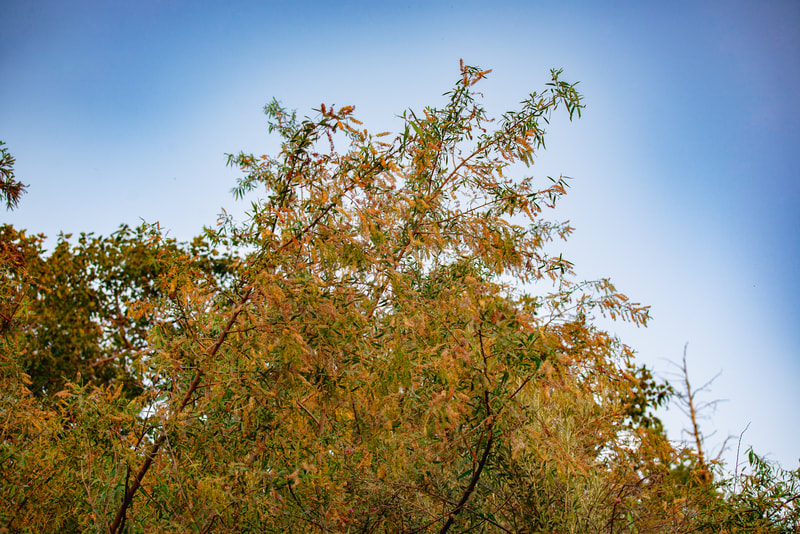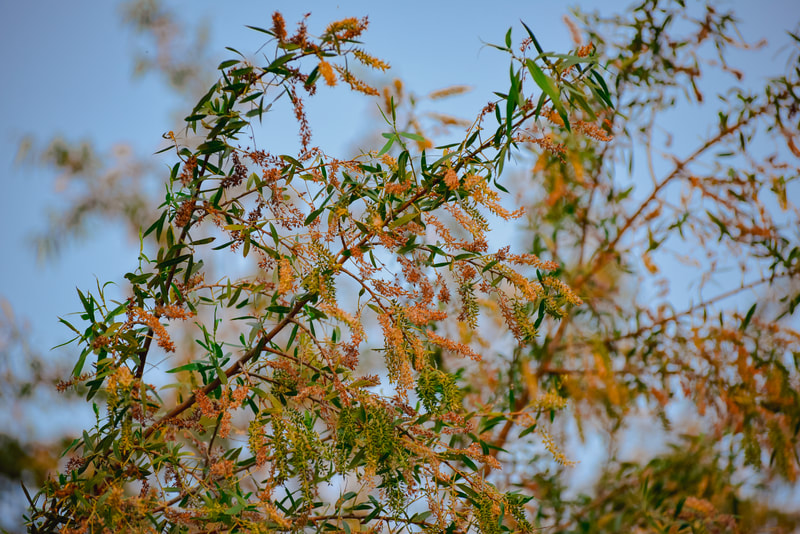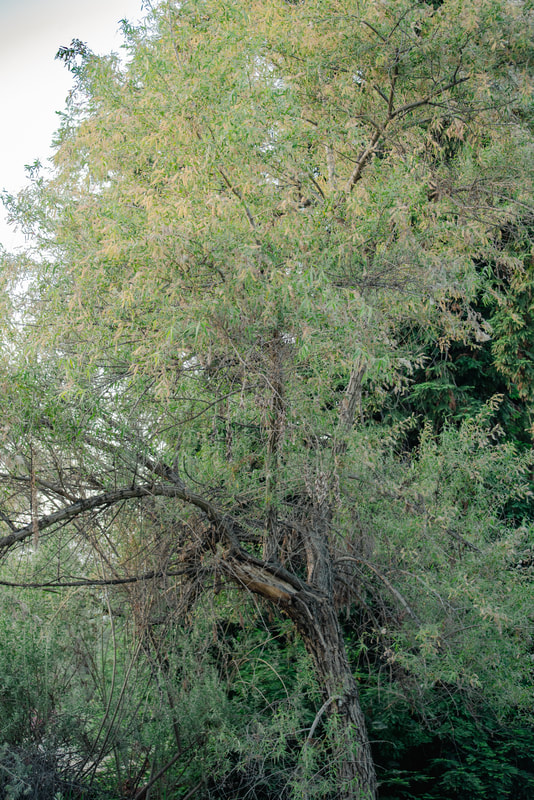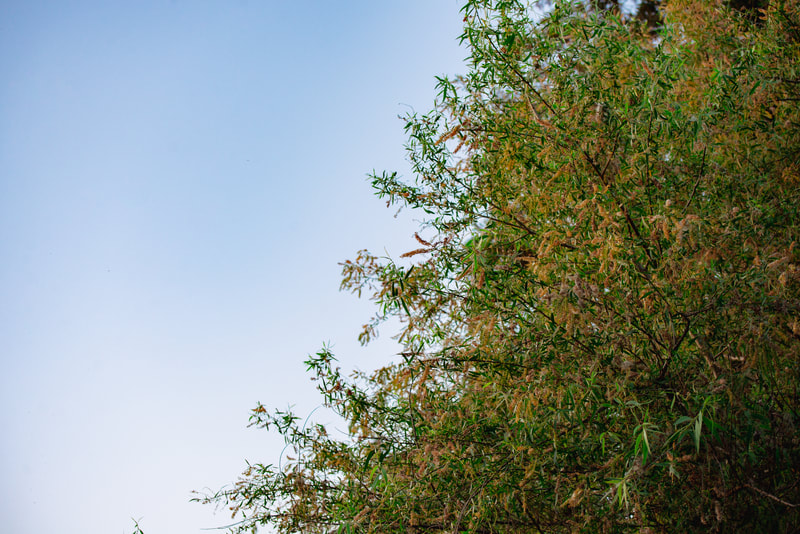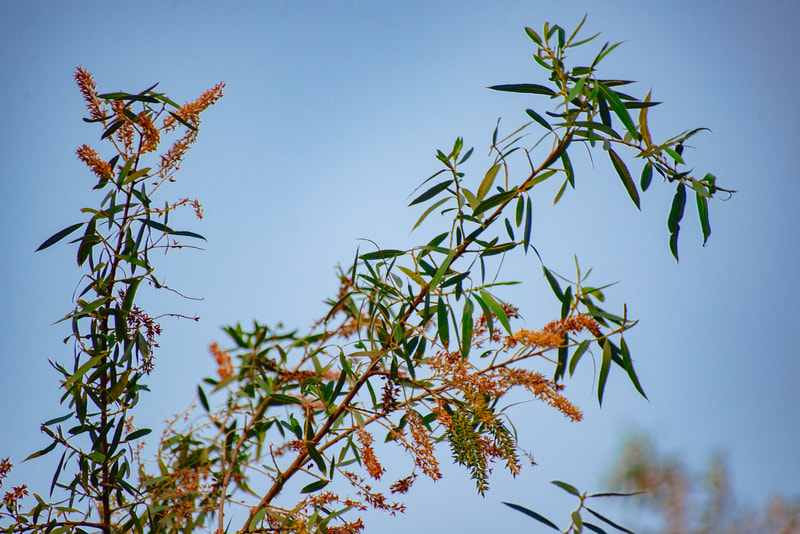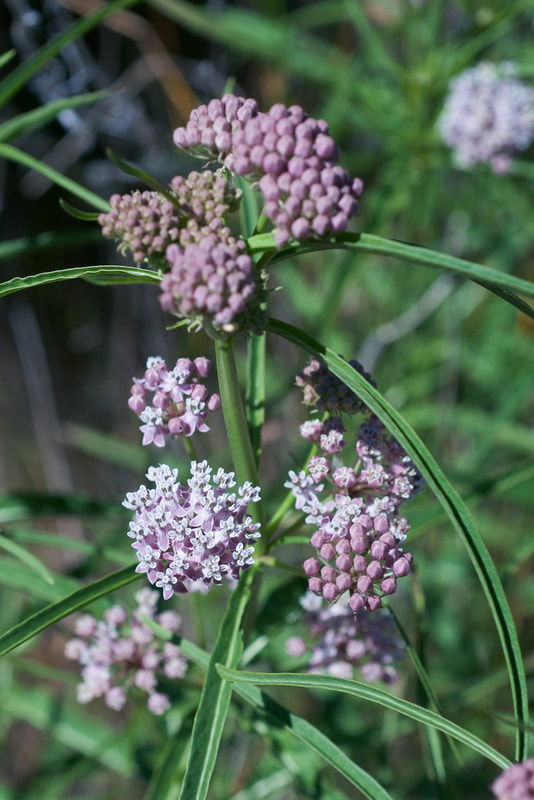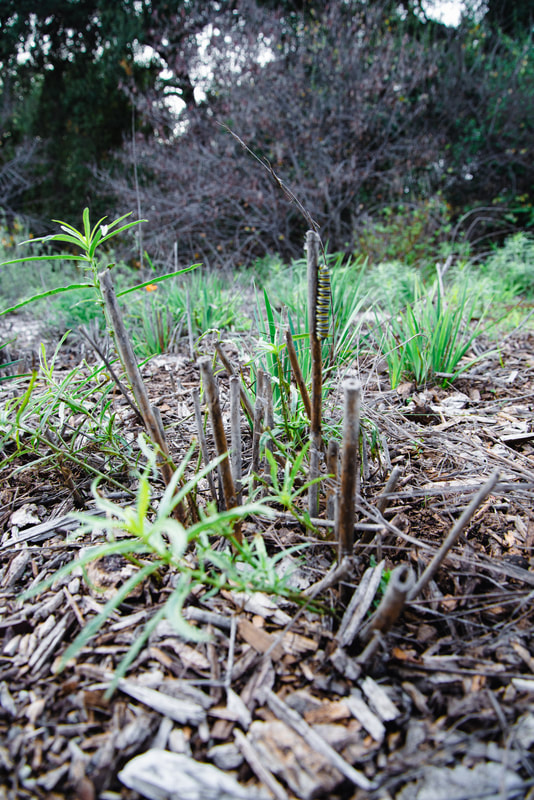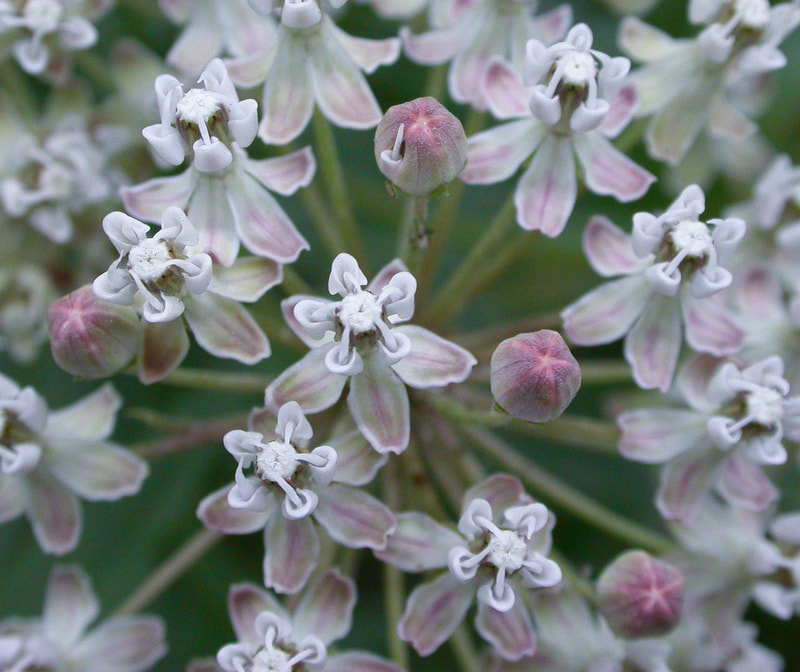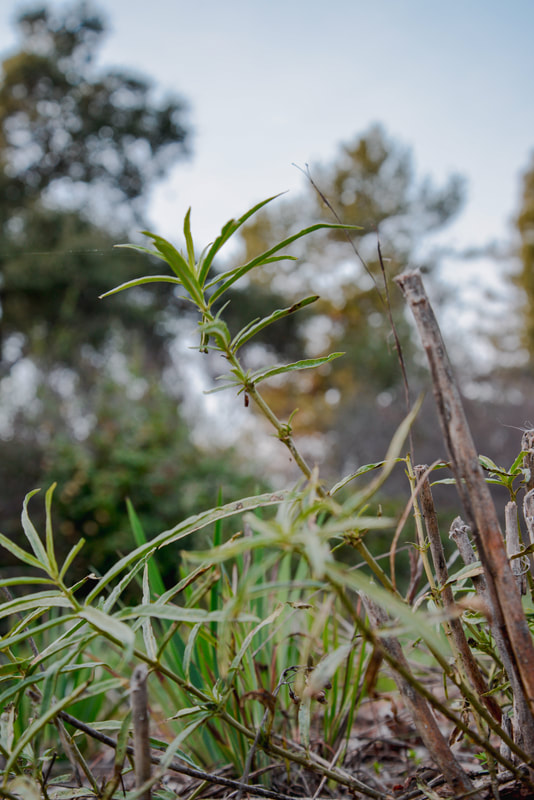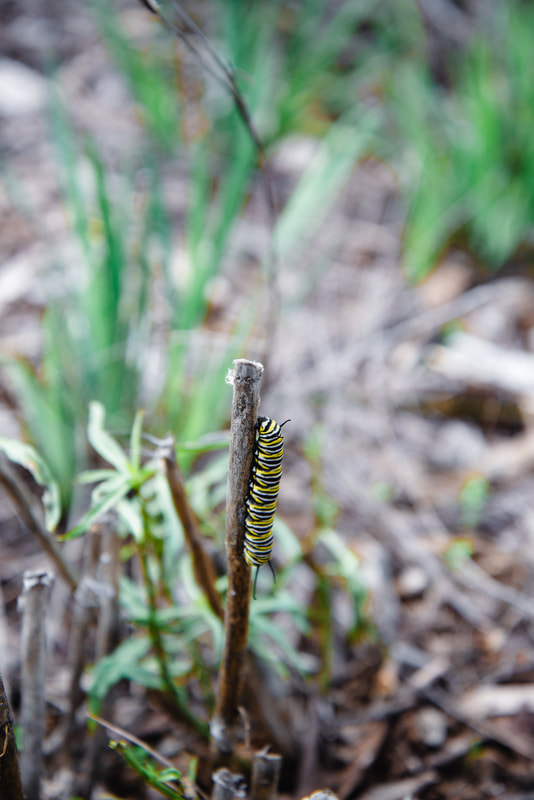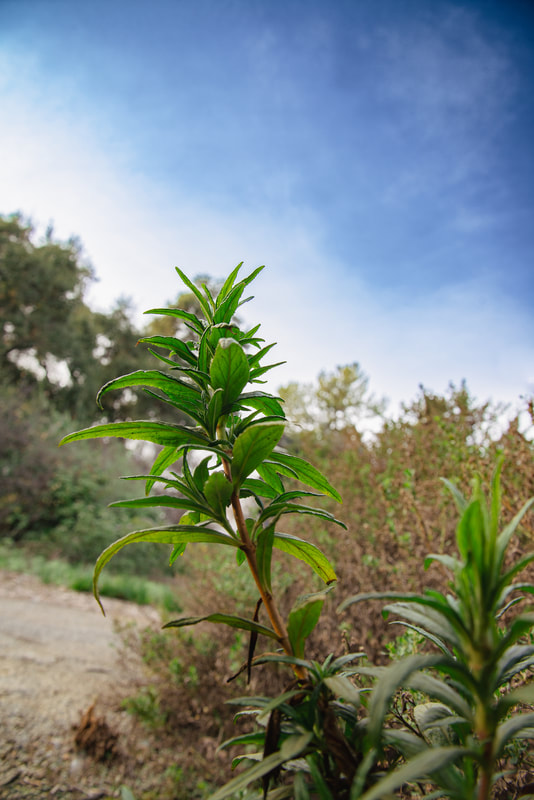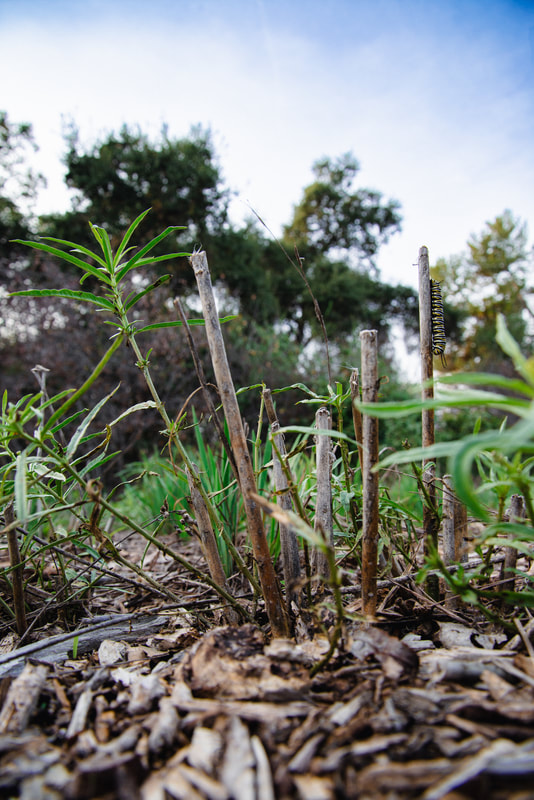Menu
Ontario
|
Hello! And welcome to the garden of Ontario!
Ontario encompasses the ancestral lands of the Maara'yam (Serrano) and Gabrielino (Tongva) communities. Maara'yam ancestral territory covers over 7.4 million acres of Southern California and the Tovaangar nation covers over 2.5 acres! The name Ontario is an indigenous word from Canada, brought by the Chaffey Brothers, who established a colony on the unceded indigenous lands of the area in 1883. Here in our Ontario garden, we can see the California Wild Blackberry, Fremont Cottonwood, the Narrowleaf Milkweed, and Goodding’s Willow! These are all important plants to our local Indigenous Communities! Today, Tribal Communities collaborate with local agencies, such as the United States Forest Service, National Park Service, and others, to obtain permits to gather culturally significant plants and other natural materials. Ontario is a place with a lot of possibilities. It has sustained life for millions of years. Since the 1920s Ontario has been home to several larger retail warehouses. 20% of Ontario's 600 warehouses have been built in just the past five years, which has now been proven to have had a negative impact on the public health and environment of the area. How do you think of Ontario when you think of the natural world? There are so many important plants here. Can you imagine people thinking of Ontario as a place where everyone cares about the environment and each other? I bet you can! How would that world be different from the world we have now? I bet, if you use your imagination, you can think of ways we can create a more caring world! We’re so glad you’re here! |
¡Hola y bienvenidos al jardín de Ontario!
Ontario abarca las tierras ancestrales de las comunidades Maara'yam (Serrano) y Gabrielino (Tongva). El territorio ancestral de los Maara'yam cubre más de 7.4 millones de acres en el sur de California, mientras que la nación Tovaangar cubre más de 2.5 millones de acres. El nombre Ontario proviene de una palabra indígena de Canadá, traída por los Hermanos Chaffey, quienes establecieron una colonia en las tierras indígenas no cedidas de la zona en 1883. Aquí en nuestro jardín de Ontario, podemos ver la Mora Silvestre de California, el Álamo de Fremont, la Asclepia de Hojas Estrechas y el Sauce de Goodding. ¡Estas son todas plantas importantes para nuestras comunidades indígenas locales! Hoy en día, las comunidades tribales colaboran con agencias locales, como el Servicio Forestal de los Estados Unidos, el Servicio de Parques Nacionales y otras, para obtener permisos para recolectar plantas culturalmente significativas y otros materiales naturales. Ontario es un lugar con muchas posibilidades. Ha sostenido vida durante millones de años. Desde la década de 1920, Ontario ha sido el hogar de varios grandes almacenes. El 20% de los 600 almacenes de Ontario se han construido solo en los últimos cinco años, lo que ha demostrado tener un impacto negativo en la salud pública y el medio ambiente de la zona. ¿Cómo piensas en Ontario cuando piensas en el mundo natural? Hay tantas plantas importantes aquí. ¿Puedes imaginarte a la gente pensando en Ontario como un lugar donde todos se preocupan por el medio ambiente y por los demás? ¡Apuesto a que sí! ¿Cómo sería ese mundo diferente del mundo que tenemos ahora? Apuesto a que, si usas tu imaginación, puedes pensar en formas de crear un mundo más solidario. ¡Estamos muy contentos de que estés aquí! |
California Blackberry (Rubus ursinus) Awün
|
Southern California Indigenous Communities and California Blackberry, Serrano: Awün
Who loves blackberries?!?! Did you know that blackberries are also native to California!? The California blackberry grows in thick bushes in shady areas in the low canyons of California. Like many of our special plant friends, blackberries can also mean that there is water nearby. Blackberries can be eaten fresh or used for medicinal purposes. How do you like to eat blackberries? Do you ever eat or drink berries to feel good? Does your family use berries as medicine sometimes? How so? |
Comunidades Indígenas del Sur de California y Mora de California, Serrano: Awün
¿A quién le encantan las moras ? ¿Sabías que las moras también son nativas de California? La zarzamora de California crece en arbustos espesos en áreas sombreadas en los cañones bajos de California. Como muchas de nuestras amigas plants, las zarzamoras también pueden indicar que hay agua cerca. Las moras se pueden comer frescas o usar con fines medicinales. ¿Cómo te gusta comer moras? ¿Alguna vez comes o bebes bayas para sentirte bien? ¿Tu familia usa bayas como medicina a veces? ¿Cómo? |
Fremont Cottonwood (Populus fremontii) Wamat
|
Southern California Indigenous Communities and Fremont Cottonwood, Serrano: Wamat
Have you ever seen a cloud growing on a tree? Well that, my friends, is what the Fremont Cottonwood looks like when it blooms its fuzzy parts! Our Fremont cottonwood friend grows near streams, rivers, and wetlands throughout the southern United States and down to Mexico. When Indigenous Communities wanted mushrooms, they knew that the Fremont cottonwood had them! The wood from the plant was used for making tools. For example, the wood could be used as a mortar for breaking up soft foods like mesquite! Cottonwood is also a medicinal friend used by Indigenous Communities to relieve swelling and muscle pain. What a special friend! It looks like clouds, hangs out with mushrooms, and makes tools! Can you think of other plant friends that do this many cool things? |
Comunidades Indígenas del Sur de California y Algodón del Freemont, Serrano: Wamat
¿Alguna vez has visto una nube crecer en un árbol? Pues bien, amigos, ¡eso es lo que parece el álamo de Fremont cuando florecen sus partes peludas! Nuestro amigo, el álamo de Fremont, crece cerca de arroyos, ríos y humedales en todo el sur de los Estados Unidos y hasta México. Cuando las Comunidades Indígenas querían hongos, ¡sabían que el álamo de Fremont los tenía! La madera de la planta se usaba para fabricar herramientas. Por ejemplo, la madera se podía usar como mortero para romper alimentos blandos como el mezquite. El Algodón del Freemont también es una planta medicinal utilizada por las Comunidades Indígenas para aliviar la hinchazón y el dolor muscular. ¡Qué amigo tan especial! Parece nubes, se asocia con setas y hace herramientas. ¿Puedes pensar en otras plantas amigas que hagan tantas cosas interesantes? |
Goodding’s Black Willow (Salix gooddingii) Haqat
|
Southern California Indigenous Communities and Goodding’s Willow, Serrano: Haqat
Willow! Willow trees are so romaaaantic aren't they? Goodding's Black Willow grows in wet places in Southern California, especially along streams. Thirsty? Look for willow! Goodding's Black Willow has strong branches and leaves, making it great material for bow-making, basket-weaving, and shelter constructions. Willow is also a medicinal friend plant! Can you think of other plants that can show you where to find water? |
Comunidades Indígenas del Sur de California y el Sauce de Goodding’s, Serrano: Haqat
¡Los sauces! ¿No son los sauces tan romaaaánticos? El sauce negro crece en lugares húmedos en el sur de California, especialmente a lo largo de los arroyos. ¿Tienes sed? ¡Busca un sauce! El sauce negro tiene ramas y hojas fuertes, lo que lo convierte en un excelente material para la fabricación de arcos, el tejido de cestas y la construcción de refugios. ¡El sauce también es una planta amiga medicinal! ¿Puedes pensar en otras plantas que te puedan mostrar dónde encontrar agua? |
Narrow-leaf Milkweed (Asclepias fascicularis) Ka’atam
|
Southern California Indigenous Communities and Narrowleaf Milkweed, Serrano: Ka’atam
The Narrow-leaf milkweed which grows throughout the Western United States and Baja California. It can be really toxic if eaten by humans. But not by butterflies! Isn’t that wonderful and wild!? So much about milkweed is awesome! The sap is really sticky like gum. Milkweed stem fiber was made into cordage and then used for making nets, slings, and traps for hunting. If you want more butterflies in your life, plant milkweed! Butterflies help all our plant friends grow their families, so planting milkweed is a great way to take good care of the environment and make new plant and butterfly friends! |
Comunidades Indígenas del Sur de California y la Asclepia de Hojas Estrechas, Serrano: Ka’atam
La asclepia de hoja estrecha, que crece en todo el oeste de los Estados Unidos y Baja California. Puede ser realmente tóxica si la comen los humanos. ¡Pero no para las mariposas! ¿No es maravilloso y salvaje? ¡Hay tantas cosas geniales sobre la asclepia! La savia es realmente pegajosa, como el chicle. La fibra del tallo de la asclepia se utilizaba para hacer cuerdas, y luego se usaba para fabricar redes, hondas y trampas para cazar. Si quieres más mariposas en tu vida, ¡planta asclepia! Las mariposas ayudan a que todas nuestras plantas amigas crezcan sus familias, así que plantar asclepia es una excelente manera de cuidar el medio ambiente y hacer nuevos amigos, tanto plantas como mariposas. |
Site powered by Weebly. Managed by iPage
